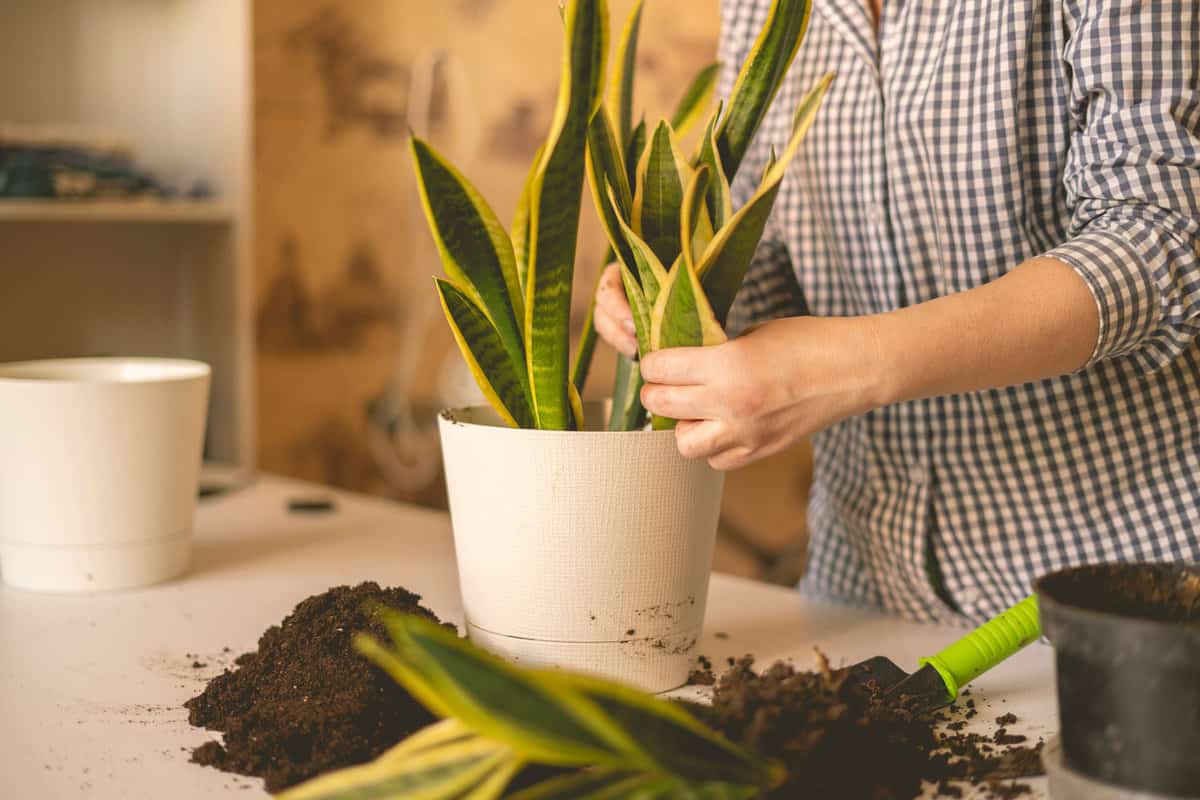Snake plants, also known as Sansevierias, are popular houseplants due to their hardiness and striking appearance.
While these plants are renowned for their ability to thrive in a variety of light conditions, sunburned leaves can be a concern for many snake plant owners.

With the right knowledge, you can create the optimal environment for your plant to flourish.
Knowing your snake plant's light preferences may save you from the heartache of damaged foliage and the frustration of poor growth.
With the specific light conditions that your snake plant needs, you'll be well-equipped to give it the perfect home and promote its long-term well-being.
Sunburned or Just Right?
One common sign of sunburn in a snake plant is the appearance of brown, crisp edges at the tips of the leaves.
This occurs because the plant's leaves are unable to stay hydrated as they slowly bake in the sun's powerful light.
When snake plants receive too much direct sunlight, the plant's leaves may also begin to yellow or develop unsightly scorch marks.
To prevent sunburn in your snake plant, find the right balance of light exposure.
Ideally, snake plants thrive in bright, indirect light. A good location for your plant would be a few feet away from a sunny window so it gets ample light without being directly exposed to the sun's rays.
If you notice signs of sunburn on your plant, it's time to move it to a shadier spot.
Signs of Adequate Light
An indicator that your snake plant is receiving the right amount of light is the appearance of healthy, vibrant leaves.
They should have a deep green color without any yellowing or browning, which could indicate too much direct sunlight.
Additionally, the plant should display steady, moderate growth without becoming leggy, which can occur due to insufficient light.
Observing your snake plant and adjusting its lighting conditions can make sure it thrives and maintains its beauty.
Identifying Sunburn in Snake Plants
Recognizing the signs of sunburn and understanding how to revive affected plants is crucial for maintaining their health and vibrancy.
Here are the indicators of sunburn in snake plants and the actionable steps to aid their recovery.
Spotting Color Changes
One of the primary indicators of sunburn in snake plants is a change in leaf color, usually involving the appearance of burn spots on the leaves.
When a snake plant gets sunburned, it may show signs of bleaching or discoloration on the leaf surface.
The leaves can appear as lightened, faded, or discolored areas, which can develop into brown or black spots when the sunburn gets more severe.
Recognizing Sun Streaks
Another sign of sunburn in snake plants is the presence of sun streaks, which are long, thin lines or marks that appear across the leaves.
These streaks may be lighter in color than the rest of the leaf and can indicate that the plant is receiving too much direct sunlight.
Monitor your snake plant for these signs, as prolonged exposure to excessive sunlight can ultimately damage the plant's overall health.
Browning and Drying Leaf Edges
Lastly, a sunburned snake plant may exhibit browning and drying of the leaf edges. This is a common symptom of sunburn and is often accompanied by drooping or wilting leaves.
If your snake plant displays these signs, it may be time to adjust its environment, such as moving it to a more shaded location or providing alternate sources of shade to protect it from harsh sun rays.
Regularly monitor your snake plant's light exposure and adjust its position to help keep it healthy and free from sunburn.
How to Revive Sunburned Snake Plants
If you suspect your snake plant is sunburned, don't worry! There are ways to help it recover.
Follow these simple steps to help improve the health of your sunburned snake plant:
- Remove the affected leaves: Carefully prune away any leaves with severe burn spots or discoloration. Make sure to use clean and sterile pruning shears to prevent spreading disease.
- Relocate the plant: Move the snake plant to a location with indirect or filtered sunlight to prevent further sun damage.
- Monitor soil moisture: The soil should not be overly dry or too saturated, aiming for a consistent level of moisture to promote root health.
- Consider repotting: If the plant is root-bound or the soil is depleted, it may be time to repot using fresh, well-draining soil. This can help the plant regain essential nutrients and provide room for new growth.
Removing the affected leaves, moving the plant away from direct sunlight, and adjusting the watering frequency can help the plant recover in about 3–4 weeks.
However, the extent of revival depends on the plant's condition, and assessing it is necessary before deciding on a plan of action.
Optimal Light Needs for Snake Plants
Snake plants are popular indoor plants that require specific lighting conditions to thrive.
Indirect Sunlight
Snake plants can tolerate a variety of lighting conditions, including low-light areas, but they prefer medium, indirect sunlight.
Direct sunlight can cause sunburn and damage the leaves. Keep your snake plant near east or north-facing windows or 10 feet away from west or south windows to receive filtered light.
Place your snake plant in a bright room or a dimly lit hallway can also provide the right amount of light, helping it thrive without any signs of stress.
Artificial Light
If natural light in your home is scarce, snake plants can also grow under artificial light.
The ideal duration of light exposure for snake plants is about 8–10 hours of bright light per day.
You should use full-spectrum LED or fluorescent bulbs to mimic natural sunlight and provide adequate light for your snake plant to grow.
Additionally, during the winter months, when natural sunlight is scarce, adjusting the duration and intensity of artificial light can keep your plant healthy and vibrant.
Protecting Your Snake Plant from Sunburn
Protecting your snake plant from sunburn involves more than just shielding it from the sun; it's about creating a balanced environment that caters to its unique needs.
Here are the preventive measures you can undertake to safeguard your snake plant from sunburn.
Location Adjustments
Ensure that the plant receives bright, indirect light, but avoid placing it in direct sunlight for extended periods, as this can cause sunburn.
Consider moving the plant further away from the window or placing it behind a sheer curtain to reduce intense sunlight exposure.
You might also like to read: Where To Place A Snake Plant In Feng Shui
Light Modulation
In addition to adjusting the indoor location, you can also protect the plant by modulating the amount of light it receives.
One method to achieve this is by using a grow light with a timer in order to control the plant's light exposure.
Set the timer to provide the snake plant with approximately 8–10 hours of indirect light daily, depending on the season.
Proper Watering Techniques
Another crucial factor in avoiding sunburn is following proper watering techniques.
Snake plants require well-draining soil and should not be overwatered. Allow the soil to dry out between waterings, as wet foliage combined with direct sunlight can increase the risk of sunburn.
Water the plant every 10–14 days, and make sure that the water does not sit on the leaves, as this can cause them to dry out and damage the plant.
Use a properly sized pot with drainage holes and a high-quality potting mix to help maintain the plant's overall health and reduce sunburn risks.
To learn more, check out this article: How Often To Water Your Snake Plant
Basking in Just the Right Light
Throughout this comprehensive guide, we've navigated through the nuances of understanding and catering to the light needs of your beloved snake plant, ensuring it stays free from the menace of sunburn.
By recognizing the early signs of sunburn and making necessary adjustments, you can shield your plant from potential harm.
Moreover, by placing it in favorable lighting conditions, adhering to proper watering techniques, and being vigilant about its overall health, you'll be well on your way to nurturing a resilient and flourishing snake plant.

